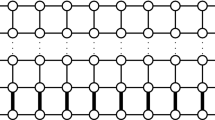Abstract
This paper introduces a computationally efficient geofence boundary violation detection method using the Triangle Weight Characterization with Adjacency (TWCA) algorithm. The geofence is defined as a maximum and a minimum altitude, and a horizontal boundary specified as a polygon that does not self-intersect. TWCA initialization divides the horizontal component and bounding box of each geofence into a finite set of triangles, then determines the triangle containing the vehicle. During flight, each position update is checked for containment within the vertical geofence boundaries using inequalities and the horizontal geofence boundaries using TWCA. TWCA searches for the triangle containing the vehicle position using breadth-first search of the adjacency graph. The root node of the search is the triangle occupied at the previous time step. This algorithm is applicable to three-dimensional geofences containing both keep-in (inclusion) geofences and keep-out (exclusion) geofences.
Similar content being viewed by others
Explore related subjects
Discover the latest articles, news and stories from top researchers in related subjects.References
Alciatore, D., Miranda, R.: A winding number and point-in-polygon algorithm. Glaxo Virtual Anatomy Project Research Report, Department of Mechanical Engineering, Colorado State University (1995)
Garey, M.R., Johnson, D.S., Preparata, F.P., Tarjan, R.E.: Triangulating a simple polygon. Inf. Process. Lett. 7(4), 175–179 (1978)
Gilabert, R.V., Dill, E.T., Hayhurst, K.J., Young, S.D.: Safeguard: Progress and test results for a reliable independent on-board safety net for UAS. In: 2017 IEEE/AIAA 36th Digital Avionics Systems Conference (DASC), pp. 1–9. IEEE (2017)
Government US: Operation and certification of small unmanned aircraft systems. In: Title 14 Code of Federal Regulations, Part 107 (2016)
Hormann, K., Agathos, A.: The point in polygon problem for arbitrary polygons. Comput. Geom. 20(3), 131–144 (2001)
Huang, C.W., Shih, T.Y.: On the complexity of point-in-polygon algorithms. Comput. Geosci. 23(1), 109–118 (1997)
Kopardekar, P.H.: Unmanned aircraft systems traffic management (UTM) safely enabling UAS operations in low-altitude airspace (2017)
Lee, D.T., Preparata, F.P.: Location of a point in a planar subdivision and its applications. SIAM J. Comput. 6(3), 594–606 (1977)
Li, J., Wang, W.: Point-in-polygon tests by determining grid center points in advance. In: Signal and Information Processing Association Annual Summit and Conference (APSIPA), 2013 Asia-Pacific, pp. 1–7. IEEE (2013)
Li, J., Wang, W., Wu, E.: Point-in-polygon tests by convex decomposition. Comput. Graph. 31(4), 636–648 (2007)
Narkawicz, A, Hagen, G.: Algorithms for collision detection between a point and a moving polygon, with applications to aircraft weather avoidance. In: 16th AIAA Aviation Technology, Integration, and Operations Conference, p. 3598 (2016)
Nordbeck, S., Rystedt, B.: Computer cartography point-in-polygon programs. BIT Numer. Math. 7(1), 39–64 (1967)
Preparata, F.P., Shamos, M.I.: Introduction. In: Computational Geometry, pp 1–35. Springer (1985)
Rastgoftar, H.: Continuum Deformation of Multi-Agent Systems. Birkhäuser, Cambridge (2016)
Rastgoftar, H., Jayasuriya, S.: Evolution of multi-agent systems as continua. J. Dyn. Syst. Meas. Control. 136(4), 041014 (2014)
Salomon, K.B.: An efficient point-in-polygon algorithm. Comput. Geosci. 4(2), 173–178 (1978)
Stevens, M.N., Atkins, E.M.: Multi-mode guidance for an independent multicopter geofencing system. In: 16th AIAA Aviation Technology, Integration, and Operations Conference, p. 3150 (2016)
Stevens, M.N., Atkins, E.M.: Layered geofences in complex airspace environments. In: 2018 Aviation Technology, Integration, and Operations Conference, p. 3348 (2018)
Yang, S., Yong, J.H., Sun, J., Gu, H., Paul, J.C.: A point-in-polygon method based on a quasi-closest point. Comput. Geosci. 36(2), 205–213 (2010)
Žalik, B., Kolingerova, I.: A cell-based point-in-polygon algorithm suitable for large sets of points. Comput. Geosci. 27(10), 1135–1145 (2001)
Author information
Authors and Affiliations
Corresponding author
Additional information
Publisher’s Note
Springer Nature remains neutral with regard to jurisdictional claims in published maps and institutional affiliations.
A short version of this paper was presented in ICUAS 2017. This work was supported in part by a subcontract from Soar Technology, Inc. under Phase II SBIR Contract No. FA8650-15-C-2629.
Rights and permissions
About this article
Cite this article
Stevens, M.N., Rastgoftar, H. & Atkins, E.M. Geofence Boundary Violation Detection in 3D Using Triangle Weight Characterization with Adjacency. J Intell Robot Syst 95, 239–250 (2019). https://doi.org/10.1007/s10846-018-0930-5
Received:
Accepted:
Published:
Issue Date:
DOI: https://doi.org/10.1007/s10846-018-0930-5




